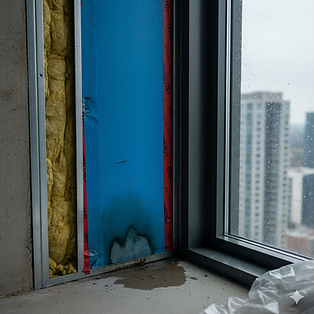
The Essential Annual Facade Inspection Checklist for Building Owners
As a building owner, maintaining the integrity and appearance of your property's exterior is crucial. The facade, particularly the facade glazing and curtain wall systems, is constantly exposed to environmental stresses—sun, rain, wind, and temperature fluctuations. Ignoring minor issues can quickly lead to expensive structural damage, water infiltration, and safety hazards.
An annual, thorough facade inspection is the best preventative maintenance strategy. Here is your essential checklist focusing on the critical components of the exterior enclosure.
1. Glazing System and Glass Panel Integrity 🔍
The glass panels and the surrounding structural glazing components are primary focus points for maintaining the building's thermal performance and watertightness.
-
Glass Inspection:
-
Check for any signs of cracking, chipping, or shattering on individual glass lites.
-
Inspect for thermal stress cracks, which typically start perpendicular to the edge of the glass.
-
Look for seal failure or "fogging" within Insulated Glass Units (IGUs), indicating moisture has penetrated the space between the glass panes.
-
Note any scratches or surface damage that could compromise strength or appearance.
-
-
Glazing Accessories:
-
Ensure pressure plates and glazing beads are securely fastened and not loose or missing.
-
Verify the condition of weep holes (drainage openings) at the base of the frame to ensure they are clear of dirt and debris.
-
2. Sealants and Weatherproofing 💧
Sealant joints are the building's first line of defense against water penetration and are often the first part of the building envelope to fail.
-
Joint Inspection:
-
Examine all perimeter sealant joints around window frames, between panels, and at transitions to other materials (e.g., stone or metal).
-
Look for classic signs of failure: cohesion failure (sealant tearing away from itself), adhesion failure (sealant pulling away from the substrate/frame), and hard, brittle, or cracked material.
-
Check for signs of dirt pickup or staining around the sealant, which can indicate water migration.
-
-
Gaskets and Weatherstripping:
-
Inspect pre-formed gaskets used in curtain wall systems for shrinkage, distortion, or hardening. They should be pliable and firmly seated in their channels.
-
Ensure all weatherstripping around operable windows and doors is intact and making continuous contact when closed.
-
3. Curtain Wall and Framing Systems 🏗️
The structural components, including aluminum framing and anchors, ensure the long-term stability of the facade system.
-
Framing Components:
-
Inspect aluminum mullions (vertical) and transoms (horizontal) for signs of corrosion or pitting.
-
Check for deformation or bowing of the frames, which can indicate undue structural load or improper installation.
-
Ensure all fasteners and bolts are present and tight. Never attempt to tighten structural bolts without consulting an engineer.
-
-
Anchorage and Connections:
-
While often hidden, look for indirect signs of anchorage problems, such as unusual movement or sagging of the facade element.
-
Inspect connections where the curtain wall meets the adjacent wall or roof for gaps or movement.
-
4. Vapor and Air Barriers 🌬️
While not directly visible, the integrity of the air and vapor barrier system behind the rain screen or cladding is essential for preventing condensation and maintaining indoor air quality.
-
Moisture Migration:
-
Look for signs of interior water damage (staining, mold) near the facade, especially at the ceiling, floor, or column lines. This is a tell-tale sign of a deeper breach in the building envelope.
-
Check for excessive condensation on the interior side of the framing or glass.
-
-
Thermal Performance:
-
Note any areas of excessive drafts or noticeable temperature variations, which may indicate missing insulation or gaps in the thermal break within the glazing system.
-
✅ Actionable Conclusion: Document and Prioritize
An annual facade inspection should be performed from both the exterior (using access equipment like swing stages or lifts for a close-up visual review) and the interior.
-
Document Everything: Take photographs of every defect, noting its location, severity, and potential cause.
-
Prioritize Repairs: Classify defects into Critical (immediate safety hazard, massive water leak), Major (will lead to critical issues within 1-2 years, IGU failure), and Minor (cosmetic, small surface scratch).
-
Call in a Professional: For complex issues involving structural glazing or large-scale sealant replacement, always consult a facade consultant or a qualified exterior restoration contractor.
Investing in a thorough annual inspection and prompt repairs will significantly extend the life of your building, save you money in the long run, and ensure the safety of your tenants.




